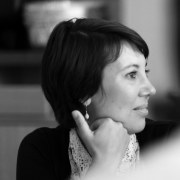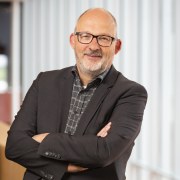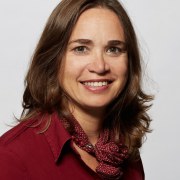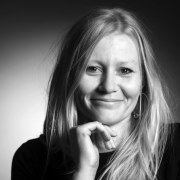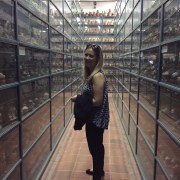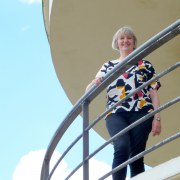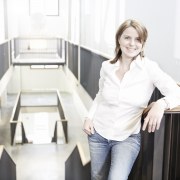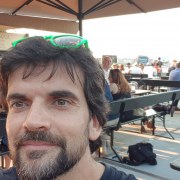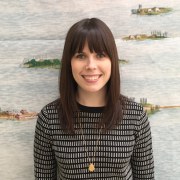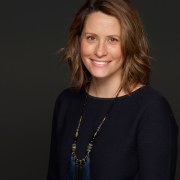Find this session's presentations here.
A preview of current and upcoming touring science exhibitions across Europe and the world. This fast-paced session will give you a glimpse of a large range of exhibitions on offer, leaving it up to you to make contacts and find out more.
There are no exhibition pitch slots left in this session.
Facilitator
Session speakers
Consultant
Freelancer
Brussels
Belgium
A short presentation of EXTRA, the marketplace for scientific touring exhibitions: www.ecsite.eu/extra
Head of program and co-operations
Kerkrade
Netherlands
New travelling exhibitions from Continium discovery center.
'World of Bricks' allows the visitor to use LEGO stones to discover and experiment with science and technology. Build a car in the garage, program a robot or make a stop-motion film in the cinema, all partof a life size city full of LEGO bricks.
Transparent sashimi, protein rich meat powder or colourful vitamin meatballs a child may need... "Meat the Future" exhibition explores the future possibilities of cultured meat. 30 3D dishes based on the science of cultured meat challenge the visitor to debate and reflect on how we feed ourself in the future.
CEO
Edinburgh
United Kingdom
Mechanical Marvels from the House of Automata:
Be immersed in the extraordinary and fantastical world of mechanical automata in a new exhibition from Nomad. The exhibition features an amazing and very rare collection of historic automata drawn from the collections of the world famous House of Automata. Beautifully produced sound and moving image, combined with automata in movement, many activated by visitors themselves, create a vivid animated environment of discovery and mechanical wonder. Visitors are transported to the 17th to 19th century, a time when analogue craft and techniques were used that have long disappeared but live on in these treasures.
Museum Director
Zurich
Switzerland
EARTH'S TREASURES - HOW WE USE AN VALUE MINERAL RESOURCES
Mineral resources play a fundamental role in our daily lives. We take their availability for granted and their worldwide consumption is steadily on the rise. What are the long-term consequences of our increasing use of non-renewable resources? What challenges lie ahead for us?
This exhibition is about the formation, mining and use of mineral resources, and how we deal with products we no longer need. What can we do to ensure that resources are extracted in an economical, environmentally friendly and socially responsible way and that they are used and reused for as long and as efficiently as possible?
Head of Research & Development
Hamburg
Germany
Engage your community in a unique dialogue. Create meaningful encounters between people with and without disabilities or between young and old. Foster empathy and promote diversity. Offer transformative experiences that change mind-sets and help to create an inclusive society. The powerful exhibitions “Dialogue in the Dark”, “Dialogue in Silence” and “Dialogue with Time” are now available in compact, travelling formats.
Exhibition's department
Fundación Telefónica
Madrid
Spain
1, 2, 3… ¡RECORDING! A history of music recording
The exhibition explores the happy encounter of music with technology towards the middle of the 19th century, the enormous technical advances in sound recording and reproduction since then and how all this transformed our ways of creating, listening to, feeling and sharing music.
Director of Exhibitions
Investigation Lab: Cold Case Ötzi
The new idea of the concept and presentation is that the visitor himself becomes a forensic researcher. This way he/she learns all about forensic methods and its applications and can compare his/hers results with those obtained during 25 years of research. The visitor is invited to make and post his/her own conclusions.
Director, Programming
Montréal
Canada
Indigenous Ingenuity – Timeless Inventions
In order to adapt to their environment, indigenous peoples developed a number of innovations. This interactive exhibition will demonstrate their tremendous ingenuity and their vital contribution to today’s society. Visitors will test First Nations innovations to discover their underlying science and technology. Interactives include fishing virtual salmon with a harpoon, building an igloo using the serpentine technique, experimenting mass distribution in a kayak, hunting various animals by observing their behaviour and choosing the appropriate trap, etc. Measuring 500 m2, Indigenous Ingenuity will open at the Montréal Science Centre in October 2017 and begin its international tour in April 2018.
Principal
Museum EXP
Minneapolis
United States
Exhibitions International has been entrusted with some of the most valuable treasures from earth and sea, including objects from the tomb of Tutankhamun, relics from Cleopatra’s Royal Palace, Princess Diana’s Royal Wedding Gown, and the only authenticated pirate treasure in the world. These riches are the heart and soul of the breathtaking museum experiences created by Exhibitions International. Each unforgettable experience has mesmerized audiences at the finest art, science, and history museums worldwide – totaling more than 30 million visitors. In 2017, we are proud to launch three new artifact-based exhibitions for European market.
Director
Cabaret Mechanical Theatre
London
United Kingdom
Curious Contraptions is an exhibition of two parts. Witty, beautifully hand-crafted automata are displayed alongside hands-on exhibits that show the basic mechanisms involved in making the automata work.
Through the practical process of constructing these simple machines, visitors will learn about kinetic energy, levers, weights, pulleys, chains, gravity, the nature of apparent randomness of movement and friction.‘
The main didactic approach is the idea of learning about science through art and creativity.
Visitors are exposed to hands-on practical experimenting, seeing what works and what does not, and learning about the physical world through that process.
Development Director
AWC AG
Köln
Germany
„The strong Four” [“Die starken Vier“]
Cause an earthquake, excavate fossils, test gravitation, produce volcano eruptions and tsunamis: This new exhibition “The strong Four” is a geography hands-on experience about the power of the four elements earth, fire, air and water, showing how the earth works and how important it is to protect it. Earth, fire, air and water not only create life but can also destroy it within seconds. The purpose of the exhibition is to give visitors an idea of the impact that the power of the elements have on our planet and the devastating results when they get out of control.
Communication Manager
Archimedes Foundation
Tartu
Estonia
Behind the Scenes: Have you ever watched a movie and thought: „Hey, how on earth did they do this!?“
AHHAA’s brand new exhibition takes you literally behind the scenes. Numerous hands-on exhibits show you how the special effects that you see on the screen are created Here, in this film studio, you can become a cinematographer, create your own stop motion animation, dub the videos or jump through walls, like a real stuntman.
This „city“ was built of more than 1 km of metal rails, over 70 windows, a solid 60 m3 of styrofoam and a studio-ful of real filmmaking gear.
Head of science exhibition and programmes
CosmoCaixa. "la Caixa" Foundation
BARCELONA
Spain
Talking Brain: There are 6,000+ human languages. But language is also a single thing: all humans have it, and it's a shared property that unites us rooted in a species-specific brain. But what is this brain like? Talking Brains aims to exhibit our brain from the point of view of its linguistic functions: a scientific approach to language that stresses its psychological and biological constitution and its indissoluble link with neuroscience, genetics, anatomy, or human evolution. Our focus is on creating experiences, incite the imagination, and send out a message of what language means for us, and how it connects to our biology.
Curator of Civil Engineering
Munich
Germany
The exhibition „energie.wenden“ (which literally means turning energy around), takes on one of the important issues facing societies all over the world today – the need for a transition to renewable energy – and makes it accessible to a broad audience. The exhibition throws light on different technologies and approaches to changing the current energy system and comes up with a new and innovative exhibition concept that encourages visitor participation to an unprecedented degree. Visitors can assume the role of policy makers and explore the complex interdependencies at play: Confronted with information and questions regarding a renewable energy system as well as with opinionated stakeholders, they are enabled to choose between different political measures and to conduct their own personal energy transition.
You can find some impressions of the exhibition here:
http://www.deutsches-museum.de/en/exhibitions/special-exhibitions/energiewenden/
Moritz Heber
Senior Traveling Exhibitions Manager, Sales
The Field Museum of Natural History
Antarctic Dinosaurs: Come along on a dramatic adventure to Antarctica—one of the most isolated and dangerous environments on Earth—and witness the latest discovery: dinosaurs. Antarctic Dinosaurs is a new traveling exhibition that immerses visitors in the thrilling hunt for never before seen fossils and sheds new light on our planet’s ever-changing climate and geology. Though Antarctica today can be a forbidding land of snow and ice, 200 million years ago it was part of the supercontinent Gondwana, a wooded, lush habitat where dinosaurs thrived. As the “Lost Continent’s” climate changed, so too did the polar dinosaurs.
Director, Museum Partnerships
National Geographic Museum
Washington, DC
United States
National Geographic Photo Ark—
The interaction between animals and their environments is the engine that keeps the planet healthy for all of us. But for many species, time is running out. When you remove one, it affects us all. The National Geographic Photo Ark is a multiyear effort, led by photographer Joel Sartore, that aims to document every species living in the world's zoos and wildlife sanctuaries, inspire action through education, and help save wildlife by supporting on-the-ground conservation projects. To-date Sartore has visited 40 countries to photograph intimate portraits of more than 6,300 species! This photography exhibition just started its tour globally, and is already gaining a swell of interest from museums and zoos.


